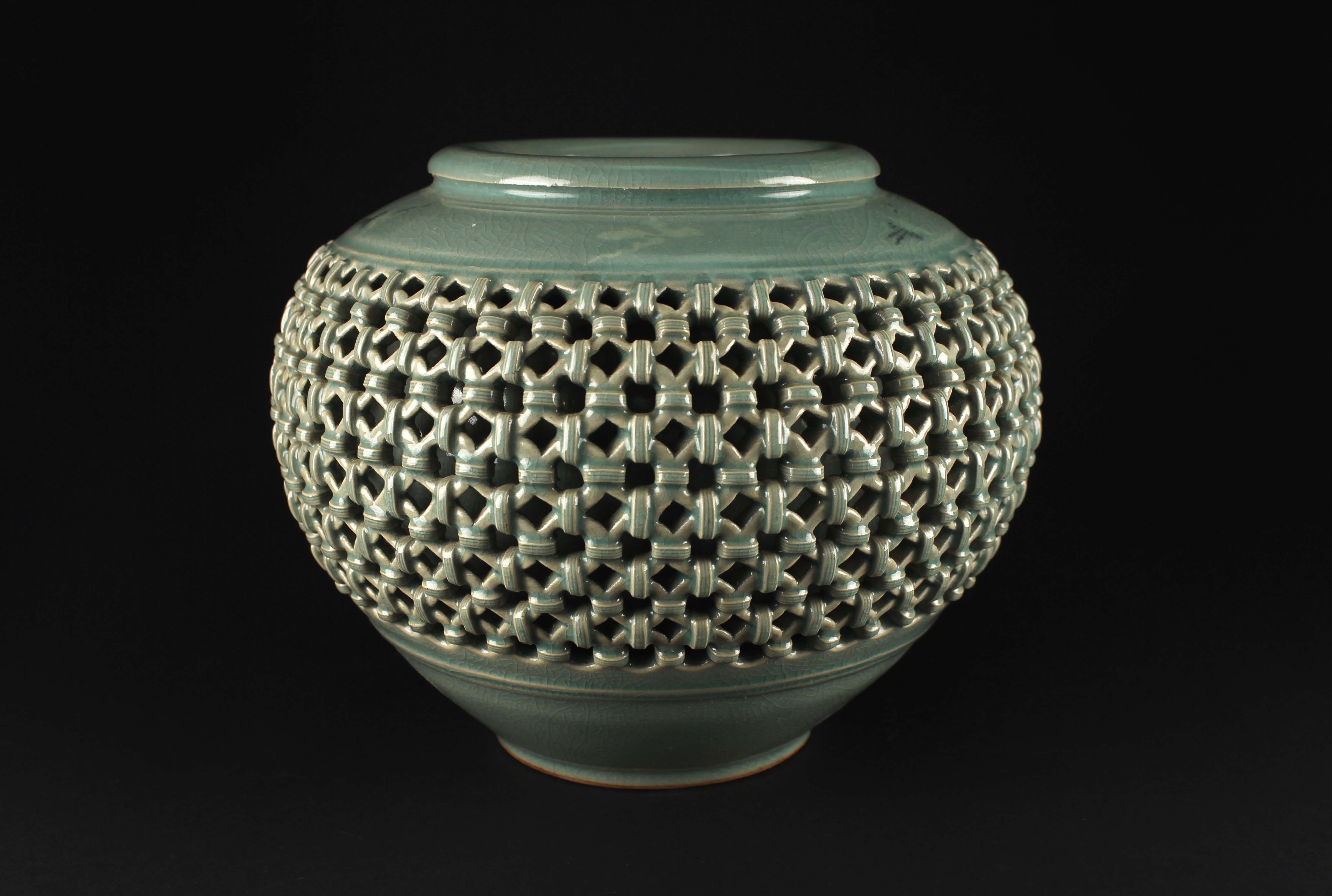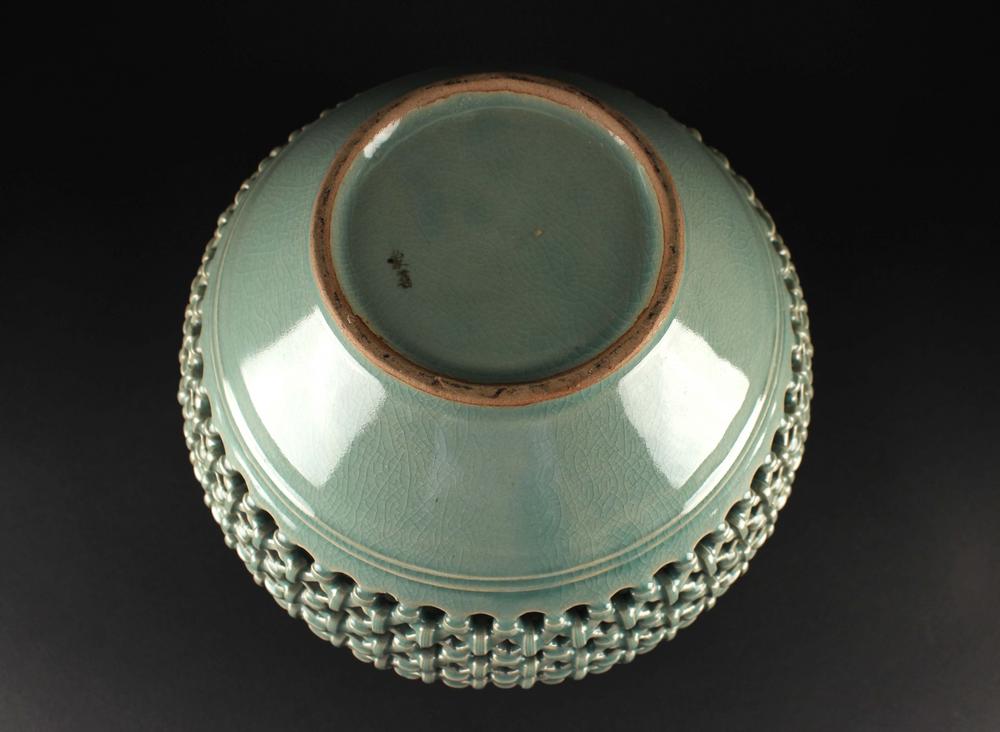| A fine and extremely rare 'Wintergreen' glazed, hollow out layer pot, , 8" high. 高丽龙泉刻花镂空罐, Note: ‘Wintergreen’ is probably the rarest monochrome glaze colour successfully produced in the Yongle period, and only three other stembowls of similar colouration appear to be recorded. The Yongle reign (1403-24) is characterized by the strong belief of the emperor in Tibetan Buddhism, which initiated an unprecedented flowering of imperial works of art and brought about some of the finest Chinese artefacts of any period. Besides commissioning a large number of Buddhist gilt-bronze images, gilt-etched lacquer boxes to house Buddhist scriptures, and similar exquisitely worked votive items, the Yongle Emperor ordered many offering vessels to be created in porcelain by the Jingdezhen imperial kilns. The present stembowl is one of those products that could not have been created without these special imperial efforts. No other reign – except perhaps the Yongzheng period (1723-35) of the Qing dynasty, three hundred years later – was marked by such innovation in porcelain technology, imagination in design and rigorous pursuit of quality as that of the Yongle Emperor. The imperial porcelain workshops at Jingdezhen in Jiangxi province increased quantity as well as quality of their production with awesome rapidity, as the excavations of waste heaps at the kiln site have documented. As new pigments and firing techniques, new shapes and designs were tried out, the potters’ technical leap forward was so immense, that thereafter no real innovation took place for centuries, until the introduction of foreign technology from the West in the 18th century supplied once more new impulses. Provenance: [size=13.3333px]Madison Auction, BC, CA, 2003             
|


About US|Privacy and Cookies|Terms|Archive|ABBY FINE ARTS AND ANTIQUES COLLECTION ~ 锦灰堂
2024-07-26 23:34 GMT-8 , Processed in 0.131941 sec., 16 queries , Gzip On.
Release 20140618, © 2014-2024 ABBYCOLLECTION.COM